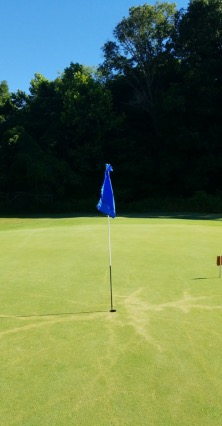The answer to February’s Plant Puzzler is lightning damage.

Tim Boyle, plant pest and disease specialist with the Department of Agriculture and Resource Management, Wisconsin Department of Agriculture, Trade and Consumer Protection, was selected as the winner from our correct entries.
The Puzzler team enjoyed reading Tim’s answer (printed below), which illustrates the diversity of experience and knowledge that can inform the diagnostic process.
My first thought is: lightning strike. My impression is based not so much on lightning strike damage I have seen in forest situations as a plant technician, but from my previous experience working in a chemical photo lab – we would see very similar patterns on photographic film. This usually happened during times of seasonal low humidity as the undeveloped film was being hand-wound onto large reels very quickly, when the operators would “put the brakes” on the film running through the fingers of their linen gloves. Sometimes you could see/feel the static electricity, and if it was enough to see the “artificial lightning”, you knew the film was doomed and you would be seeing electrical patterns on it after the film was developed – patterns very similar to these, usually shown on color film as purple to white lightning tendrils shooting out from a central source across the film emulsion. Then it was the Customer Service Department’s turn to explain “Sometimes these things happen, we’re very sorry for ruining Johnny’s birthday party photos, but please accept this free roll of film…”.
It also looks very much like the lightning patterns that result from a Van de Graff generator, both in the people’s hair that are touching it, and in low-light photos of the electrical aura generated by the device.

